Japan Now Allows Individual Tourists to Enter—But There's a Catch
And it's not that you still need a visa
:max_bytes(150000):strip_icc():format(webp)/KatherineAlexBeaven-015fae1ab95a490fb3d682eea49357c6.jpg)
Traveling to Japan just got a little easier. Starting on Sept. 7, 2022, Japan now allows non-escorted travelers—as long as they book their trip through a travel agency.
Japan has seen one of the most cautious reopenings. Borders were only just opened on June 10, 2022 for tourists booked into guided tours. While the country is loosening its current restrictions—including doing away with the mandatory pre-arrival COVID-19 testing for certain travelers—it’s not quite open season for travelers just yet.
Independent travelers will still not be allowed in; independent meaning anyone who books their own lodging and flights. The only way to get into Japan will still be to book with a travel agency, though the country is no longer requiring visitors to take part in a guided tour. Only flights and hotels need to be booked through an agency. Once you arrive, you can travel through the country without a tour.
By booking through a travel agency, Japan hopes to have better contact tracing. Under the new rules, travel agents assume responsibility for the tourists they bring to Japan, becoming the point of contact for any COVID-19 issues or contact tracing needs.
In addition to booking flights and accommodations through a travel agency, travelers will also (still) need to apply for a pre-arrival visa.
Also as of Sept. 7, Japan no longer requires fully-vaccinated travelers (those who have received their initial COVID-19 vaccinations and any eligible boosters) to show proof of a negative pre-arrival COVID-19 test within 72 hours of departure. The daily cap for arrivals into the country, both foreigners and nationals, will also be more than doubled from 20,000 to 50,000; and travelers from all nations will be welcomed.
The Japan Times. " Japan Opens Borders to Foreign Travelers on Self-Guided Tours. " Sept. 7, 2022.
Canada to Loosen Border Restrictions Next Month—as Long as You're Vaccinated
Is It Safe to Travel to Europe?
Travel to Africa and the Middle East: A Reopening Timeline, Country by Country
This Country Is Open to Travelers From Anywhere—as Long as You’re Vaccinated
Is Thailand Ready to Reopen Its Borders to Tourists?
CDC Releases New COVID-19 Testing Guidelines for Cruise Ships
Everything International Travelers Need to Know About Planning a Trip to the US
What to Expect If You’re Going on a Cruise This Winter
Morocco Reopens Its Borders to Citizens of 67 Countries, Including the U.S.
What Travelers Should Know About the Delta Variant
The CDC's New COVID-19 Guidance for Activities Is Great News for Travelers
Travel to North America: A Reopening Timeline, Country by Country
The CDC Won't Require COVID-19 Testing for U.S. Domestic Travel. Here's Why
Japan Is Fully Reopening to US Travelers This Fall
United Will Offer Optional Contact Tracing On All Flights
What It’s Like to Fly Halfway Around the World During the Pandemic


Japan travel requirements 2024: What travelers need to know
We aim to keep this post updated about Japan travel in 2024 with official Japan travel restrictions, requirements, and health and safety guidance. Our goal is to help you make informed decisions so you can travel confidently, safely, and responsibly in this new post-pandemic world of ours.
Since travel restrictions can vary by citizenship, we will be focusing our post on rules that affect U.S. citizens.
Last update: January 28, 2024. Originally published: July 2022.
Disclosure: This post contains some affiliate links. If you make a purchase through one of our links, we may receive a small commission, at no additional cost to you.
* Get our free Post-Pandemic Travel Checklist *
January 2024: “Japan is seeing an increase in tourism now that the country is open to visitors. Many visitors are traveling to Tokyo and Kyoto but some towns and cities like Nikko, Fukuoka, Hiroshima, and Naha are also seeing rises in tourism. Currently there are no travel restrictions within Japan unless it is due to environmental catastrophes like the earthquake that occurred in Ishikawa Prefecture recently. Access to healthcare in Japan is easily available and affordable. Although foreigners can sometimes pay up to 200% more for healthcare it is still cheap. Many attractions and famous sites around Japan especially in Kyoto and Tokyo are crowded with lines that are longer then expected. In general, restaurants in Japan are smaller and can only able to accommodate up to ten people or fewer and the space can feel cramped. Like anywhere else, keep an open mind and be flexible and there will be no problems while traveling around Japan.” – Brandon of Zimminaroundtheworld , expat living in Japan
At the end of the post, we share more on-the-ground perspectives from local residents and travelers to Japan so you can get a sense of what it’s really like.
Table of Contents
Is Japan open for travel? Can I travel to Japan right now?
As of October 2022 , Japan is open for tourism for independent travelers. Visa-free travel for selected countries, including the US, has been resumed.
Tourists with U.S. passports can stay in Japan visa-free for up to three months. Find details and rules for entering Japan from other countries here .
Japan travel restrictions have been eased but travelers are asked to follow guidelines with regard to masks, social distancing, dining etiquette, and more.
As of April 2023 , a proof of vaccination or a negative Covid-19 test are no longer required for all travelers arriving in Japan.
To facilitate the arrival process, it’s highly recommended to submit your information online through Visit Japan Web before travel.
Steps for Traveling to Japan: What to Know (2024)
For a smoother arrival, travelers to Japan can pre-register for airport Immigration and Customs to receive the QR codes used for “Fast Track” at major airports across Japan.
We completed the Japan entry process in late March 2023. It was admittedly a bit confusing, so I thought I’d share our experience and tips, as the process is still the same (apart from step 2).
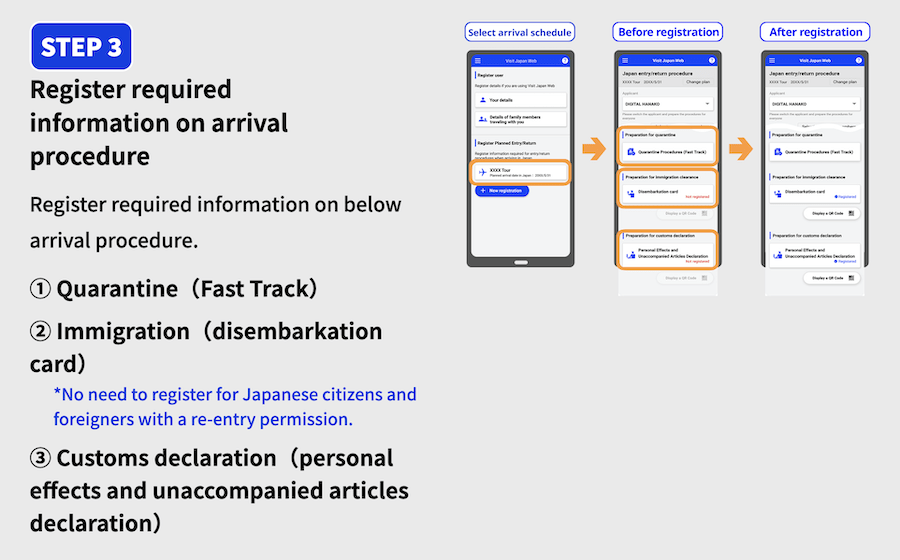
1. Register at Visit Japan Web
While the Fast Track/Quarantine procedures are no longer mandatory to complete in advance, I was glad I followed advice to pre-register through the Visit Japan Web site.
The latest they say the latest you can register is at least 6 hours ahead of your flight to Japan.
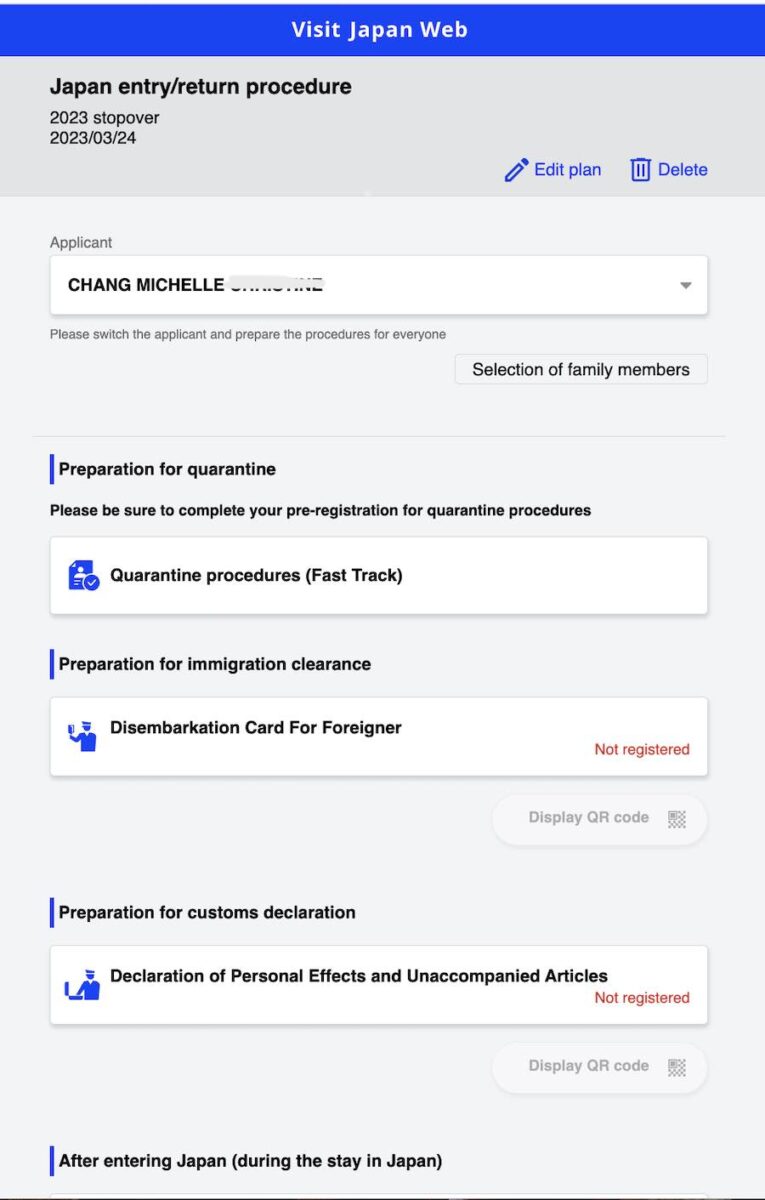
2. Submit your Covid documents in advance – NO LONGER REQUIRED
3. Register for immigration QR code
Returning to the main registration dashboard on the website, select the next module “Disembarkation Card for Foreginer,” which says it’s required for landing in Japan.
Some details pre-populated from from my profile. I selected Tourism for purpose of visit. Then there are three ways to report length of stay: year, month, day; as well as a few questions about any criminal background in Japan.
Once completed, a button “Display QR code” appears below the appropriate section.
Take a screenshot of the Immigration QR code and save it to your phone . It will have a yellow line above it.
If you don’t have the QR code, there are immigration cards available to fill out at standing desks located before entering the lines. Some people got all the way up to the immigration agent and were asked to step aside to fill out a card, which are also available next to each immigration stall.
The immigration line at Narita moved steadily but took about 25 minutes since several flights had arrived at once.
When I showed the QR code, the immigration officer simply took a headshot picture and fingerprint scans, then stuck a “landing permission” stamp in my passport for 90 days. No questions asked.
4. Register for Customs QR code
Returning again to the main dashboard, finally select “Preparation for customs declaration.” This registration allows travelers to go through an electronic declaration gate, which wasn’t super clear once we were at the airport.
I entered my flight origination (Hanoi) and number of family members with me (1). Then there’s the usual customs questions – type of goods, prohibited items, monetary funds, alcohol, cigarettes, souvenirs over 200,000y.
Again, take a screenshot of the Customs QR code and save it to your phone . It will have a blue line above it.
At Narita, the customs line for QR codes are labeled “electronic declaration” in blue. There are also kiosks that allow QR code, card, and duty free, as well as those that are for physical customs card only. The lines weren’t too long so it didn’t matter much which line we chose.
The customs officer had us scan our QR code and we could see our entered data displayed on an over-sized tablet-like device at the desk. No questions asked, we proceeded to exit the airport.
5. Sign up for travel insurance
It’s recommended to obtain insurance to cover medical costs related to COVID-19 in Japan. For travel insurance that covers Covid, we use Nomad Insurance by Safety Wing.
Quarantine rules in Japan: What happens if I get Covid?
Travelers are not required to quarantine upon arrival in Japan, provided that they are not suspected of having Covid-19. See details here .
Residents report that quarantine rules for testing positive may no longer be enforced anymore.
Prviously, foreign tourists who tested positive for Covid while in Japan had to contact a local consultation center . A 7-10 days quarantine at a government-designated accommodation facility was required with all costs covered by the visitor.
The quarantine period could end within 7-10 days depending on the symptoms and/or negative COVID-19 test result. See details here .
Can I travel to Japan in April? Can I travel to Japan this Spring?
Travel to Japan in April is open . See details above and check back for updates.
Is it safe to fly to NRT Narita or HND Haneda International Airport ? Health screenings and body temperature checks are no longer in place at the airport. Wearing of masks is no longer required on flights or in the airports, though masking is still widely practiced.
Stringent cleaning and seating limits are implemented.
What is it like to fly to Japan right now? All Nippon Airways reports that masks are now optional. Additional procedures are in place at Immigration – please see details above.
Do Americans have to quarantine when traveling to Japan? No . See quarantine details above.
Does Japan check COVID-19 symptoms of incoming travelers? Health screening procedures such as temperature checks and simple symptom questionnaires are typically not in place at ports of entry anymore.
Does Japan require a negative Covid 19 test for travelers? A negative test is no longer required to enter Japan as of April 2023.
Does Japan require a proof of Coronavirus vaccine for travelers? A proof of Coronavirus vaccine is no longer required to enter Japan as of April 2023.
Do I still need to provide a negative Covid test or quarantine if I have been vaccinated? No. A negative Covid test, quarantine, or proof of vaccination are no longer required to enter Japan.
Is a booster shot required for travel to Japan? No. A booster shot is no longer required to enter Japan.
What Covid testing options are available for travelers? PCR and/or antigen tests are available for travelers in Japan. Travelers should contact the local consultation center to determine the location of testing facilities within Japan. A non-comprehensive list of some COVID-19 testing facilities can be found here .
Test results are available within 24 to 72 hours but many labs can return results in a matter of hours. PCR test costs vary from ¥2,500 to ¥16,500.
What healthcare options are available to travelers in Japan who get the virus? Japan hospitals and clinics are open. Foreign visitors are required to secure a medical insurance which that will cover medical costs in case they contract COVID-19 in Japan.
For travel insurance that covers Covid, check out Nomad Insurance by Safety Wing >
What service businesses and restaurants are open in Japan ? Businesses and restaurants in Japan are open. Some businesses may require their own mask rules or capacity limits.
What public gatherings are allowed in Japan? Public gatherings are allowed in Japan subject to safety guidelines.
Are face masks required in Japan? As of March 2023, wearing of face masks in Japan is recommended but no longer required.
Face masks are almost universally worn in public, especially in urban areas, indoors and on public transportation. The Consulate website states that failure to adhere to mask-wearing norms reflects poorly on foreign visitors.
Are buses running in Japan? Trains, buses and taxis are running as usual in Japan.
How has the Coronavirus impacted Japan?
Japan managed impressively well compared to most countries in the early days of the pandemic. Although Japan has been previously in a State of Emergency, the lockdowns were less disruptive on Japanese daily life.
However, Japan’s inbound tourism business lay dormant for years. Japan finally began easing restrictions in 2022 and reopened to travelers in June with strict entry requirements.
Japan finally eased entry requirements for travelers in October 2022 making it easier for travelers to visit the country. Visa-free travel has also been resumed for select countries.
Vaccination in Japan started later than some other countries. Around 80% of the population has been vaccinated and 64% had received a booster shot.
Tourism is now back with record numbers of visitors, however, staffing shortages have not fully recovered.
For the current situation in Japan, including: total COVID-19 positive cases; total cases in Japan; and COVID-19 testing in Japan, please see the Japan Ministry of Health site .
What should you pack for safely traveling in Japan?
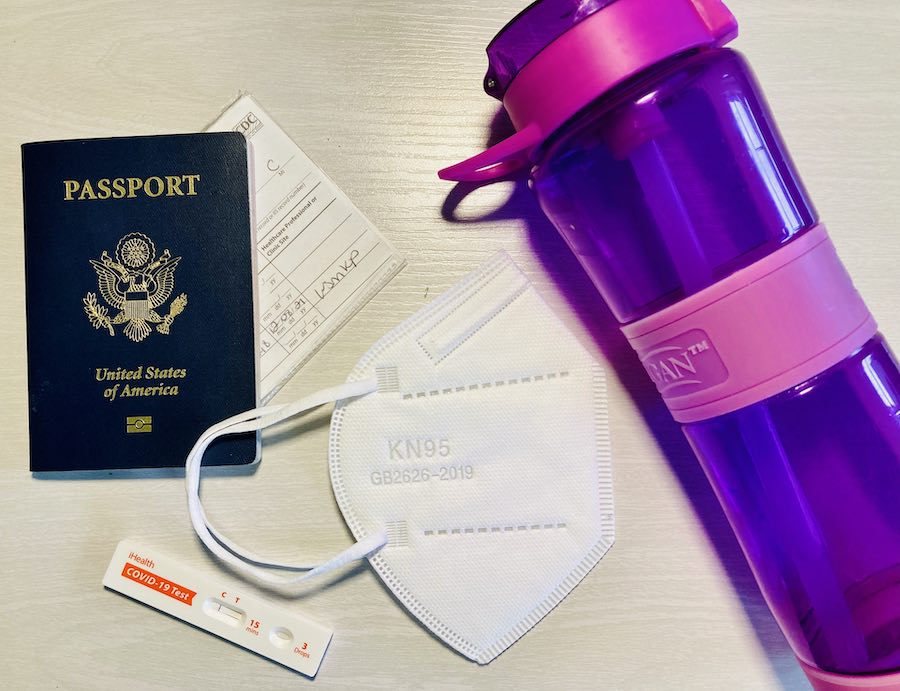
😷 Face Masks -Face coverings are recommended and widely used in public places. Find N95 masks at Bona Fide > or designer options at Vida >
🧴 Hand sanitizer – Bring enough for your entire trip, as alcohol-based hand sanitizer can be in short supply. Shop hand sanitizer >
💊 Medicine – Bring enough prescription and over-the-counter medication for your entire trip to avoid trips to the clinic.
💳 Vaccine Card Holder – Protect that paper CDC card when traveling abroad (if your country doesn’t offer a digital version). Get a simple plastic protector > or Vegan leather clippable > or Leather passport + card combo holder >
👃 Covid self-test – The most studied rapid antigen self-test with FDA emergency authorization. NOT valid to enter countries. Use for your own peace of mind. Order from CVS > or Walmart >
💧 Sealed water bottle – Make sure your reusable water bottle has a lid that’s not exposed to the air. We use one of each of the following: Shop insulated water bottles with protective lid > Shop water bottles with purification filter and protective lid >
✈️ Travel insurance that covers Covid – We’ve started using Nomad Insurance by Safety Wing for affordable evacuation, international medical, and trip coverage.
What do Japan locals and recent travelers say about visiting Japan now?
What is it like to visit Japan right now? It’s our goal to provide regular updates here from real people on the ground, to help potential visitors know what to expect. The following are subjective opinions only. Official travel guidance can be found above.
September 2023 – Jackie Szeto of Life of Doing , American traveler: “My husband and I traveled to Tokyo and Nikko, Japan for vacation in September 2023. Expect large crowds at major attractions, restaurants, and trains in major cities such as Tokyo and Kyoto. Visiting other destinations such as Nikko is a nice change of pace with fewer crowds, especially on the weekdays.
It’s recommended to complete the Immigration and Customs declaration on the Visit Japan Web to expedite arrival, but it’s not required. When landing at international airports, the QR codes for Immigration and Customs are still accepted. Otherwise, all COVID protocols have been dropped in the cities. Antibacterial hand sanitizer is still provided at entrances of hotels, restaurants, and shopping centers. Some people still wear masks in crowded areas and on trains, but most go mask-free.”
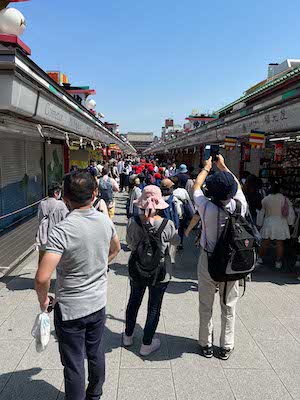
May 2023 – Sophie Pham of Delightful Travel Notes , traveler: “My husband and I were traveling in Japan for 11 days from May 11-21, 2023 for our vacation. I found that Japan had already welcomed visitors with open arms, free of earlier restrictions. The return of both domestic travelers and international tourists created a lively atmosphere, and crowds could be seen in a lot of places.
In May, it took us 45 minutes to clear immigration at Kansai International Airport after landing at around 7:45am.
All attractions and food venues were fully open, with no social distancing measures or mandatory mask rules, although some restaurant servers, locals, and taxi drivers still chose to wear masks. Some famous restaurants had long lines again, and popular attractions like Fushimi Inari, Kiyomizu-dera, and Senso-ji-ji could get crowded during the day. If there’s a particular popular restaurant you want to try, it may be best to make your dinner reservation in advance, especially for weekend. Overall, everything is lively again and we had a great time.”
March 2023 – Michelle, Intentional Travelers, American visitor: “We enjoyed a two day layover in Japan. The online procedures and QR codes were a bit confusing but I highly recommended doing them in advance of travel to make your arrival smoother.”
February 2023 – Joel, US traveler: “For the most part the Japanese are wearing masks. I’d say mask wearing is at about 99%. Despite the crowds in the city and packed trains and subways, it honestly feels way safer than generally any place in America where mask wearing is far from the majority. ANA enforces a mask wearing requirement whereas United is pretty much a free for all.
One key thing that is good to know is at the ticketing counter they need to know your return flight info when initially checking in. We had all the other Japan travel docs as far as the gov mandated requirements but this one kinda caught us off guard. The immigration line may seem staggering but it moves. ”
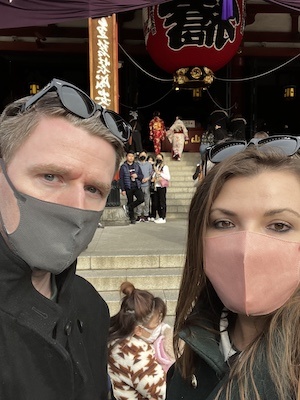
January 2023 – Lizzie of Wanderlust & Life , UK traveler: “I flew to Tokyo in January 2023 for 3 days as part of a stopover between Australia and the UK. For us it felt like the country is so happy to welcome tourists again. We were slightly worried about visiting or entry restrictions changing last minute but the airline kept us up to date and apart from filling out a lot of forms on arrival it felt quite normal being there.
As Japan only opened recently there weren’t as many tourists as we were expecting which was a plus really. We were made to feel so welcome in the country.
Masks are mandatory indoors and everyone seemed to be following this. The vast majority of people were also wearing masks outdoors too. Sanitiser is readily available in restaurants and tourist attractions. We didn’t encounter any contact tracing or even requests to show covid passes. The only frustration we had was that we flew JAL and we had to wear masks our whole flight which was about 14 hours in one go and this was enforced by cabin crew.”
November 2022 – Darryl H., New Zealand traveler: “My visit to Japan involved a return to the sort of measures that, in my home country of New Zealand, had been abandoned some time ago. The first action on arriving at Tokyo’s Narita Airport, with my mask firmly in place, was to allow officials to check and confirm I had complied with mandatory online registration of evidence of my vaccination status. Once this had been done, the arrivals process was pretty much standard.
During my 10-day stay, I experienced no restrictions on my movements or activities. The differences were in the roles of masks, sanitiser and – in some instances – distancing. The wearing of masks indoors and on public transport is close to one hundred percent, whether or not they are demanded. Outdoors, in most situations, they appear to be worn by at least 98 percent of people, although in some areas later in the evening there is an obvious relaxation in standards – especially among younger people. While most tourists appear happy to comply with the standards followed by locals, the proportion of non-mask use by non-Japanese is clearly larger than by Japanese. At no stage did I see any visitor reproached for this.
There is sanitiser on hand (pun intended) everywhere. It is probably accessed by about a third of people. There are many locals who are fastidious about sanitising.
While I observed no enforced distancing on public transport or in the street, it is definitely in place in cafes and other eateries. Most places I visited had plastic partitioning between patrons, and crosses to discourage the use of every second seat. Groups or couples are, of course, welcome to sit together.
The buffet breakfast in my hotel illustrates all three of the above differences. When I arrived at breakfast each morning, masked of course, the attendant ensured that I first sanitised my hands and then put on plastic gloves. Only then could I approach the serving implements and food. I would then sit on one of two seats (the second having a cross on it), both of which were partitioned off from the next pair of seats. Seats with another seat opposite were separated by another plastic partition. If I wanted to return to the buffet for more food, I first had to remask and re-glove. Once I forgot the gloves, and was politely turned back before I could touch the serving implements.
It is not uncommon for Japanese hospitality venues to give high priority to cleanliness, but there seems to be super-high priority now. Where in New Zealand I might expect a quick wipe over of a table between customers, in Tokyo it now appears to be a thorough and sometimes deep clean.
The precautions in no way reduced my pleasure in revisiting Tokyo. And they increased at least my perception of being protected.”
September 2022 – Jackson, American visitor: “Traveling to Japan reminded me of the COVID situation in Hawaii a year ago. People go about their day with a medical mask. Every store front has hand sanitizers and thermo cameras. COIVD testing and vaccination clinics are common place. Despite these COVID precautions, Japanese residents and businesses continue to welcome visitors with refreshing grace and hospitality. Japan’s omotenashi , beautiful scenery, and extraordinary delicacies are worth exploring and appreciating, but can tempt visitors into overlooking the uncertainty that underlines Japan. I hope visitors will take the time to learn about the challenges of the Japanese people and reciprocate Japan’s hospitality with a gracious thank you.”
Aug 21 2022 – Y., American Japanese dual citizen: “ I returned from visiting family in Japan two days ago. Travel is still tough. The plane was empty – only 20 passengers on a big airplane. My pre-travel Covid test was 10 minutes earlier than the required 72 hours so I was turned away at the airport. I scrambled to find a last minute PCR test with rapid results and rush back to the airport.”
August 2022 – Christine, American visitor: “Japan isn’t currently open to tourists. I was there for a school conference, and had to get a conference visa. One has to get a visa for Japan in advance and you can only get one with an EFRS form filled out from someone in Japan.
I had to have a negative PCR test from within 72 hours of departure time. There’s eased quarantine procedures, which depend on the countries you’ve been to in the previous 2 weeks. And you have to have the MySOS app on your phone because they might check up on you. It also expedites your entry because you can upload all the necessary forms/COVID test/questionnaire ahead of time.
Everyone wears a mask everywhere, and they’re available for cheap at convenience stores. Because I was on a university’s campus most of the time, I had to report my temperature and if I was having any symptoms to the University every day.”
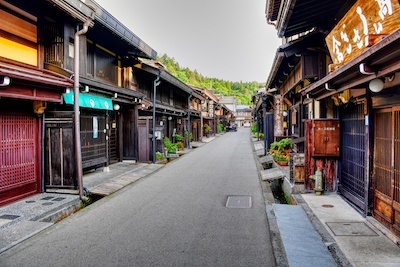
July 2022 – Brandon of https://zimminaroundtheworld.com , Expat in Japan: “Currently Japan is only doing guided tours for international tourism. Travel entry for normal tourism is not an option at the moment. I recently took a trip around central Japan and visited a variety of cities and saw hardly any tourists. It’s nice to get great photos of popular attractions without crowds of people in the photos. But at the same time, it is taking a toll on the economy. I’ve seen shops and restaurants struggle to survive here and locals begging for tourism to come back.
Masks have been worn in Japan even before Covid. To this day, the majority of the population wears masks and obeys the rules, this includes both foreigners and locals. I wear a mask when leaving my apartment and only take it off when social distancing can be achieved or while eating at a restaurant. The positive aspect about Covid is that there are no long lines to enter attractions or eating establishments. I feel public transportation is safe here as the Japanese are very good and sanitizing everything.”
Planning a trip to Japan?
Check out our other Japan travel resources: – Great Things To Do Around Iwakuni, Japan
If you have questions or updates about travel to Japan during the Coronavirus crisis or post-pandemic, please let us know in the comments below.
~ Pin this post for later or share with friends ~
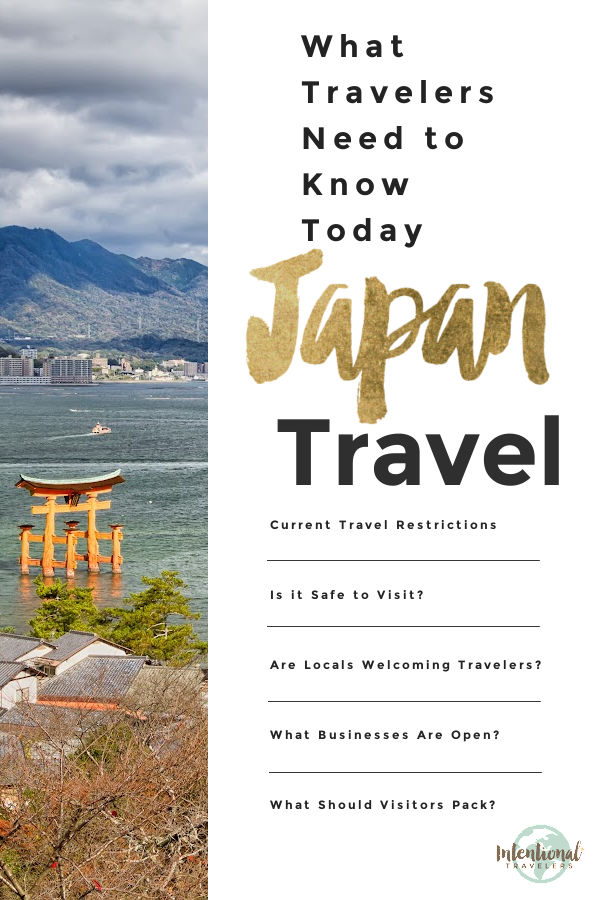
Disclaimer: Please note, travel restrictions change frequently. Readers must take responsibility for verifying information through official sources like the State Department and CDC, in respect to their specific situations. No responsibility can be accepted by Intentional Travelers for action or inaction as a result of information provided through IntentionalTravelers.com. Any information provided here is issued as general information only.
Similar Posts

Paris France travel requirements 2024: What American travelers need to know
We aim to keep this post updated about Paris France travel in 2024 with official Paris travel restrictions, requirements, and health and safety guidance. Our goal is to help you make informed decisions so you can travel confidently, safely, and responsibly in this new post-pandemic world of ours. Paris is a destination close to our…

Our Ultimate Trip Wish List: 10 Travel destinations we dream of
It seems that every time we travel, wanderlust kicks in and our list of places to visit only gets longer! As digital nomads, we are fortunate to visit new destinations around the world each year. Honestly, we are content and don’t feel that there’s any one particular place that’s eluding us. There’s nowhere we have…
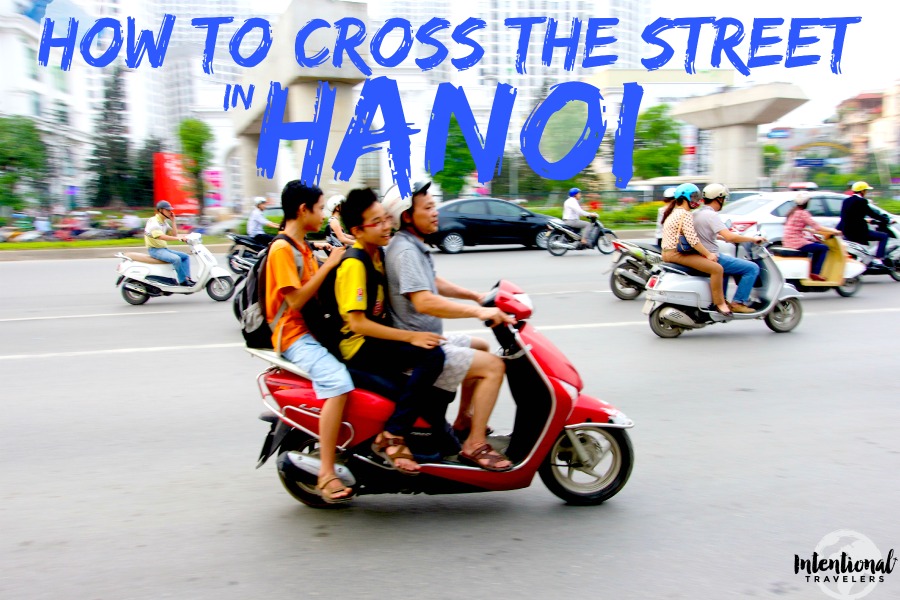
How to Cross the Street in Hanoi Traffic
We are by no means the first to post on the internet about crossing through street traffic in Hanoi (or any other cities in Vietnam), and that’s because it is an unforgettable cultural adventure. For the first half of our month visit, we stayed with close friends who were one year into a five year…

Thailand travel requirements 2024: What travelers need to know
We aim to keep this post updated about Thailand travel in 2024 with official Thailand travel restrictions, requirements, and health and safety guidance. Our goal is to help you make informed decisions so you can travel confidently, safely, and responsibly in this new post-pandemic world of ours. Since travel restrictions can vary by citizenship, we…
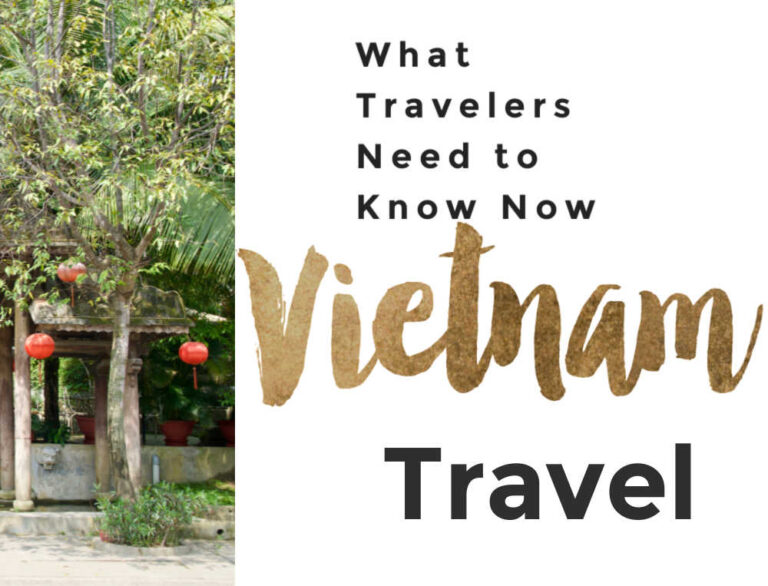
Vietnam travel requirements 2024: What travelers need to know
We aim to keep this post updated about Vietnam travel in 2024 with official Vietnam travel restrictions, requirements, and health and safety guidance. Our goal is to help you make informed decisions so you can travel confidently, safely, and responsibly in this new post-pandemic world of ours. Vietnam is a destination close to our hearts….

Hoi An Tour Recap
Last week we hosted 6 guests for their very first trip to Vietnam. The week went better than we could have imagined. We enjoyed it so much that we’re going to do this again in the near future (more on this later). Our goals for this trip were: to help orient our guests to traveling…
Hi Great article ! I noticed you have been vaccinated once with JJ (same here) . You mentioned the requirements for boosters but it sounds like you haven’t had a booster? I tried to sort through the link page but couldn’t find any further info. So my question is I’m planning to travel after May 8th with 1 JJ vaccination, I’m Canadian, but will be coming from Indonesia. Thanks for any insight you might have
Hi and thanks for visiting our blog. While we had the single JJ vaccination, we also had boosters. I mentioned it because the Japan entry form allows you to essentially count JJ as two shots out of the three that are required. In other words, at least one booster is currently required for entry to Japan. That said, vaccine documentation will no longer be required after May 8 so you shouldn’t have to worry about it.
I am travelling to the US from Australia via Japan in September. I fly with JAL, from Melbourne (MEL) arriving at Haneda International Airport (HND), but need to fly out of Narita International Airport (NRT) to New York (JFK).
I would like to know if I will be allowed to travel, via Japan, in September.
Australia is in Blue Category and I have had 3rd dose of Covid vaccination.
I look forward to your reply soon.
Thank you for your question. Unfortunately, it’s difficult to say what will be possible in September, as we do expect the rules to change over time. Currently, foreign travelers are limited to package tours and may not use public transit. To find out if any exceptions can be made for transit between airports, you can try the Japan visitor hotline .
Leave a Reply Cancel reply
Your email address will not be published. Required fields are marked *
This site uses Akismet to reduce spam. Learn how your comment data is processed .

Japan to (Finally) Fully Reopen to Independent Travelers
The majority of japan’s most stringent border restrictions will be done away with starting october 11..
- Copy Link copied

Photo by Peter Bohler
For the first time since the beginning of the pandemic, foreign travelers who have received at least one booster shot (or come with a negative PCR test taken with 72 hours of departure) will be able to visit Japan without supervision.
The new protocols, which go into effect on October 11, are a cautious step forward for a country that has imposed some of the strictest tourism restrictions since the pandemic began.
Any independent tourist—not just those traveling with authorized groups, which has been the case since June 10, or through a travel agent, the rule since September 7—will be able to enter and travel within the country as they please. The change was announced by Prime Minister Fumio Kishida on September 22 in New York City’s Central Park. The Prime Minister also announced that the cap on the number of tourists allowed in each day would be abolished altogether. And visa requirements enacted in response to the pandemic will also be discontinued.
What has changed for travel to Japan?
Japan has been very measured about allowing visitors to enter. It wasn’t until June 10 this year that a limited number of travelers (initially a maximum of 20,000 per day, a number that was raised to 50,000 per day this month) from 98 countries —including the United States—were allowed to visit.
The news that the country would fully reopen came just two weeks after a previous update to entry requirements that ended the need for visitors to arrive with a negative predeparture COVID-19 test, register with the government, get a QR code for immigration, and obtain travel insurance. Visitors also, unpopularly , had to be on an organized tour. The rules were in effect from June 10—when Japan first allowed visitors to enter, more than two years after the onset of the pandemic—until September 7.
As of September 7, foreign travelers have been able to enter Japan as long as they’ve had at least one booster shot and worked with a travel agent. The move—billed as an easing of the rule that visitors had to be on a group tour—turned out, for many tourists, to be anything but a simpler path forward. It instead proved to introduce a convoluted process requiring clearance via a Japanese travel agent, often with hefty fees or commissions attached.
Business organizations within and outside Japan have called for the country to ease its border controls to support the economy, especially the tourism industry, which has been badly hurt by the pandemic (the yen has currently dropped to its lowest level against the U.S. dollar in more than two decades). Still, many Japanese are wary of further easing border measures because the country has been struggling with a seventh wave of infections.
The Associated Press contributed to this reporting.

- Search Please fill out this field.
- Manage Your Subscription
- Give a Gift Subscription
- Sweepstakes
Japan to Welcome Independent Travelers Next Month — What to Know
Travelers must show proof of triple vaccination or a negative COVID-19 test to enter the country.
:max_bytes(150000):strip_icc():format(webp)/StefanieWaldek-38071ba574ea46c2ac94e15fa18dc581.jpg)
YUICHI YAMAZAKI/AFP via Getty Images
Japan is lifting a major COVID-19 travel restriction next month.
On Thursday, Japanese Prime Minister Fumio Kishida announced that independent travelers will be welcomed back to Japan on Oct. 11, The Japan Times reported . The daily cap on the number of arriving visitors will be lifted that day, too.
Travelers from around the world will be able to enter Japan with proof of triple vaccination or a negative COVID-19 test result. Travelers from eligible nations, including the United States, will be able to enter the country without a visa for short-term travel.
Currently visitors are only allowed to visit via state-recognized travel agencies.
Kishida made the announcement at a news conference in New York while at the United Nations General Assembly.
Japan's first travel restrictions went into effect on Jan. 31, 2020, when the entrance of foreign nationals from China's Hubei province was banned. By the end of August 2020, the country had expanded the entry ban to 159 destinations.
The country also capped the number of visitors entering the country each day, starting with just 5,000 visitors on March of this year and increased their limit to 50,000 visitors last month.
In 2019, Japan had a record 31.88 million international visitors — a number that dropped to just 250,000 in 2021 with the travel restrictions, The Japan Times noted.
"I would like to support the lodging, travel, and entertainment industries that have struggled during the coronavirus pandemic," Kishida said at the conference.
While many international travelers will likely want to take advantage of the cheap yen, the Wall Street Journal reported that nearly one in three foreign visitors to Japan are from China, which is still barring international travel for its citizens.
Japan to relax Covid travel restrictions and grant entry to independent tourists
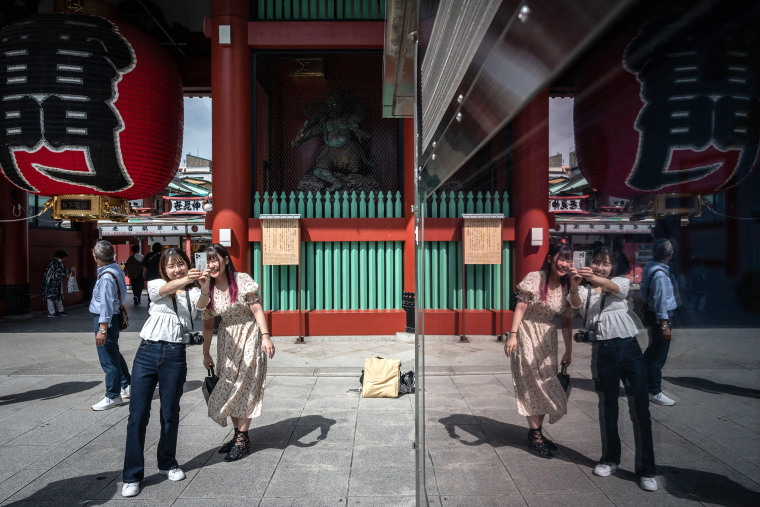
NEW YORK — Japan’s strict border restrictions will be loosened next month, the prime minister announced Thursday, allowing tourists to easily enter for the first time since the start of the pandemic.
In a news conference at the foot of Central Park in New York, Prime Minister Fumio Kishida said independent tourists would again be welcomed as of Oct. 11, not just those traveling with authorized groups.
A cap on the number of tourists who are granted entry — which has been gradually increased this year — will be nixed altogether. And visa requirements that were imposed in response to the pandemic will also be rescinded.
Japan’s tough Covid-19 restrictions have sent the number of visitors plummeting and its tourism industry reeling. Though foreign tourists were welcomed back in June after a pause of more than two years, the reopening has been confusing to many seeking to visit.
A previous announcement billed as an easing of the group tour rule turned out, for many tourists, to be anything but — introducing a convoluted process requiring obtaining clearance via a Japanese travel agent, often with hefty fees or commissions attached.
Now, the country appears to be returning to normal, in time for some to book travel for Japan’s fall foliage. Kishida said a campaign aimed at bolstering the tourism industry would be rolled out offering discounts.
“We hope that many citizens will take advantage,” he said as he wrapped up a trip to New York.
Until now, Japan persisted in pandemic travel rules that many other countries have long since dropped. Some tourists have shifted vacations to countries including South Korea and Thailand, which have had looser rules of late.
Kishida spoke on the sidelines of the U.N. General Assembly. In other remarks, he called for reform of the U.N. Security Council and dismissed any skepticism about Japan’s increased military spending, saying it remained a “peace-loving nation.”
He also said Japan would “boldly take necessary steps” to combat excessive fluctuation of the yen, which has dropped to its lowest level against the U.S. dollar in more than two decades.
Japan allowing independent tourists to visit for the first time since the pandemic

Japan is swinging open its doors to tourists.
The country first cracked the door open to authorized tour groups in June. However, tourist numbers were capped, and travelers had to meet special visa requirements to enter.
Starting Oct. 11, independent tourists will be welcome back in Japan, and caps and pandemic-related visa requirements will be lifted.
Japan's Prime Minister Fumio Kishida announced the country's wider reopening Thursday during a press conference around the United Nations General Assembly gathering in New York.
He received thunderous applause when he shared the same news in a speech at the New York Stock Exchange.
Learn more: Best travel insurance
"Japan will relax border control measures to be on par with the U.S. as well as resume visa-free travel and individual travel," Kishida said.
Japan's tourism industry has been devastated by tight border controls over the past two years.
When to book holiday travel: Here's the best time to buy your plane ticket if you're flying for the holidays
'They should've helped me': Booking through platforms like Expedia leaves some travelers stranded
Can I travel to Japan right now?
Travelers may currently visit Japan with authorized tour groups, but they'll be able to explore the country on their own starting in mid-October.
Do I need to quarantine or a COVID test to visit Japan?
Travelers who've received at least three doses of COVID vaccines can skip pre-departure testing , as of early September.
No COVID testing or quarantine is required upon arriving in Japan from the United States. Travelers from other countries may need to test or quarantine, depending on the country of origin. Details are available through Japan's Ministry of Foreign Affairs .
Is Japan costly to visit?
Traveling in Japan can get expensive, but its currently weak yen can work in travelers' favor.
Where can I find help once I'm in Japan?
The Japan National Tourism Organization offers a 24-hotline with tourist information and emergency assistance available in English. The phone number is 050-3816-2787 from inside Japan or +81-50-3816-2787 from abroad.
There is also a U.S. Embassy in Tokyo and several U.S. Consulates across the country.
Contributing: Associated Press
Japan tackles overtourism with restrictions for some iconic sites

Mar 27, 2024 • 5 min read
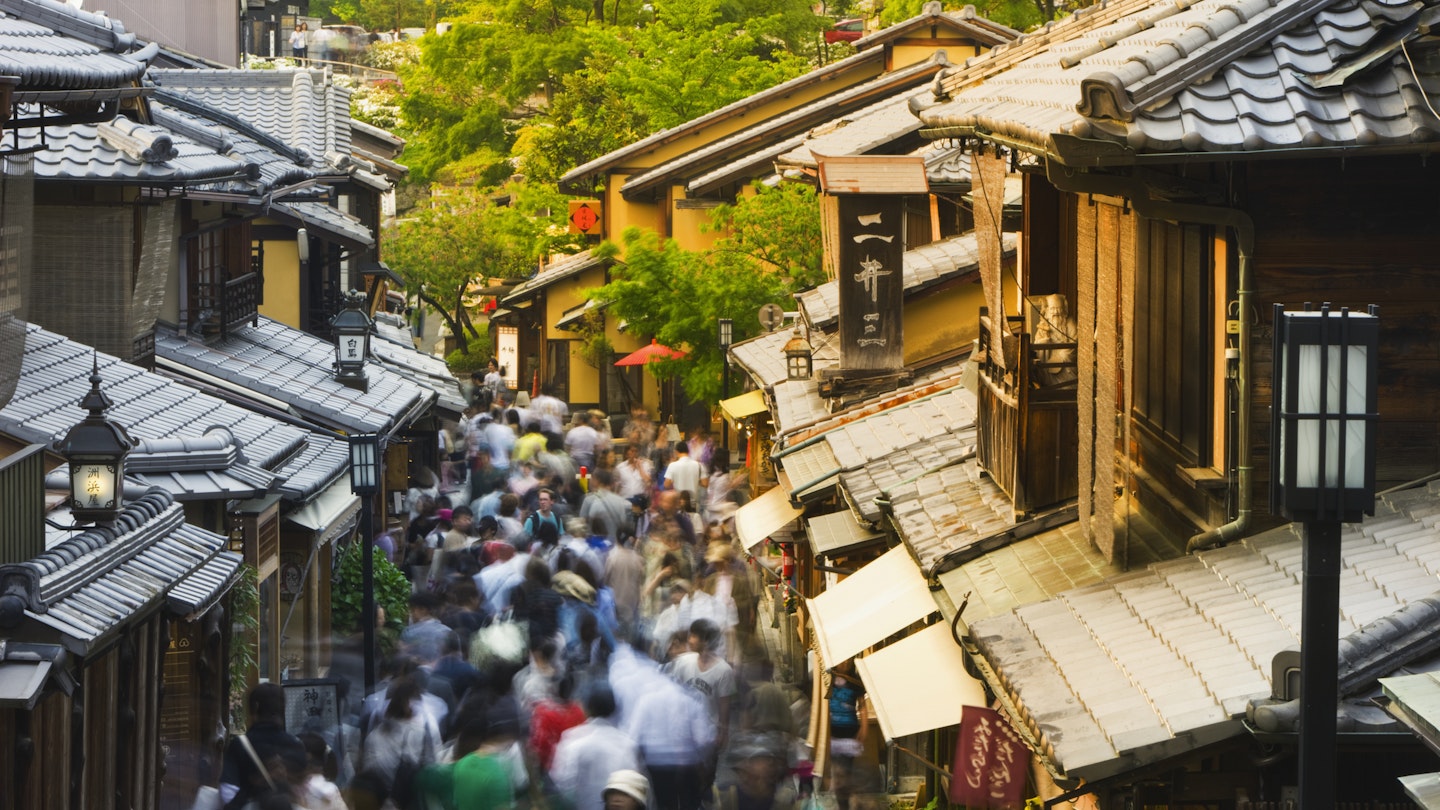
From restricted capacity to increased tourist taxes, options are being considered to counter overtourism in Japan © Jon Hicks / Getty Images
Japan is set to limit visitors at some popular attractions so that sites don't suffer from overtourism. Here's what you need to know.
Japan’s enduring popularity for overseas visitors is bringing consequences as the country seeks to balance the benefits of tourism and the impact on the areas visited, particularly at iconic destinations .
Recently, tourists have been banned from certain private streets in Kyoto ’s famous historic Gion district , traditionally home to the teahouses where geisha (geiko) and maiko (apprentice geiko ) performers work, largely due to antisocial behaviour. Unruly tourists have even been blamed for harassing geisha, with the Japan Times reporting that one had her kimono torn and another had a cigarette butt put in her collar.
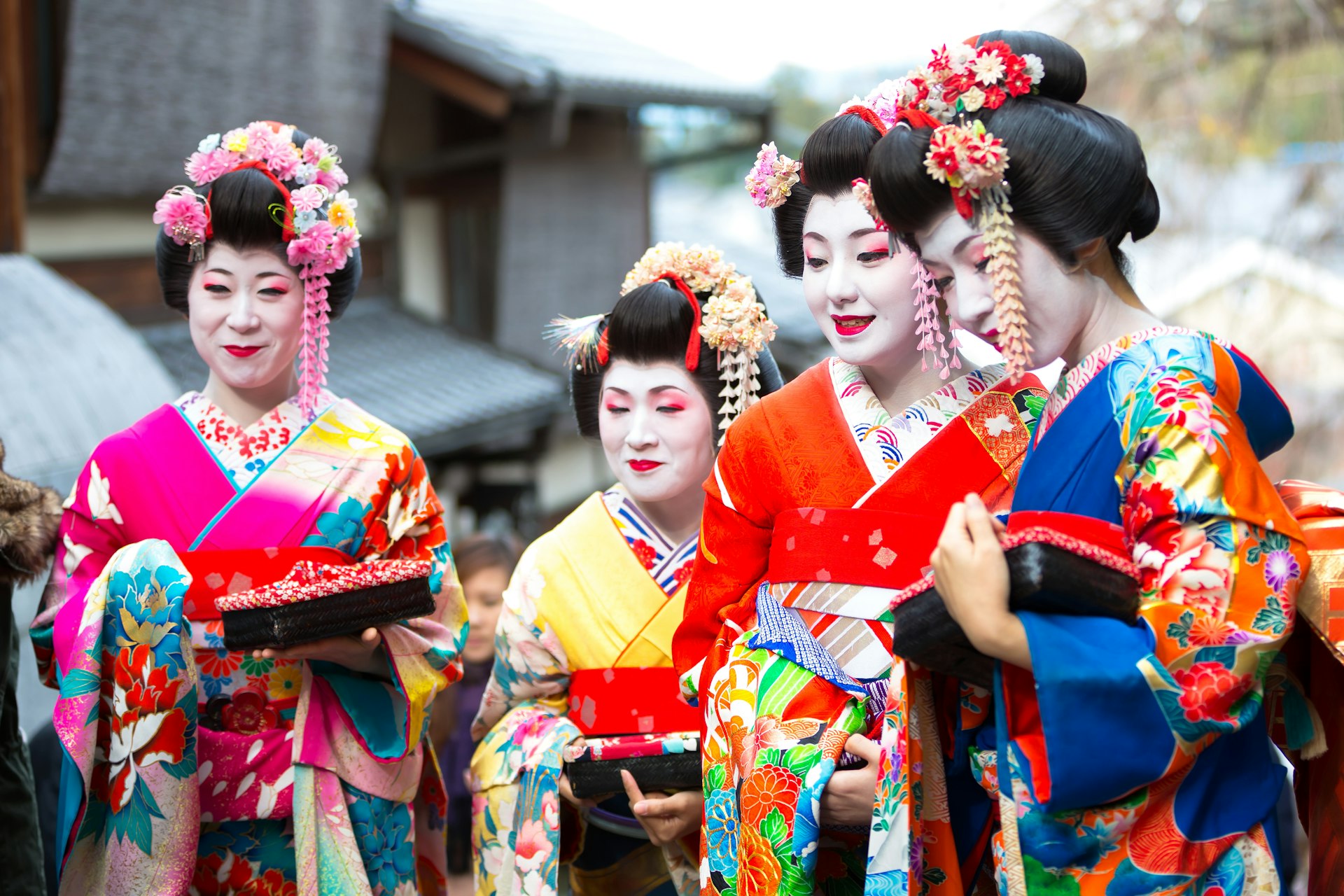
What new policies are being considered?
New fees and restrictions have already been introduced on climbing specific trails up Mt Fuji , in order to combat overcrowding, reduce the environmental impact — including cleaning up all the trash that results from so many people on the mountain — and improve safety for everyone doing the climb.
Kyoto is considering special tourist express bus routes, that will whisk visitors to the city’s most iconic sites in order to reduce overcrowding and improve efficiency on regular local buses, as well as to make what can be a complicated system easier for travelers.
Higher pricing for tourists is also being considered, having largely been absent in Japan, where many of the most famous cultural attractions are surprisingly inexpensive to enter. For example, Kyoto's famous golden temple Kinkaku-ji costs ¥400 for adults, which is about US$2.50. Changing this would be controversial, and it seems more likely that there would be increases in tourist taxes in order to fund services for visitors.
What are tourist taxes used for?
Local tourist taxes, usually collected as an extra on top of payment for your hotel, are common across many parts of the world, although these are relatively low in Japan compared with, say, destinations in the US like Honolulu and San Francisco.
These aim to fund some of the local costs associated with visitors: Kyoto’s is on a sliding scale based on the price of your hotel room, from ¥200–1000 a night (about US$1–7). The city of Hatsukaichi, home to the UNESCO-listed Itsukushima-jinja , often known as Miyajima and famous for its torii gate standing in the water off the island, recently implemented a ¥100 (about US$0.60) fee to fund the preservation and management of the site.
Japan already has a ¥1000 (about US$7) tourist departure tax that you may have never noticed as part of your plane fare.
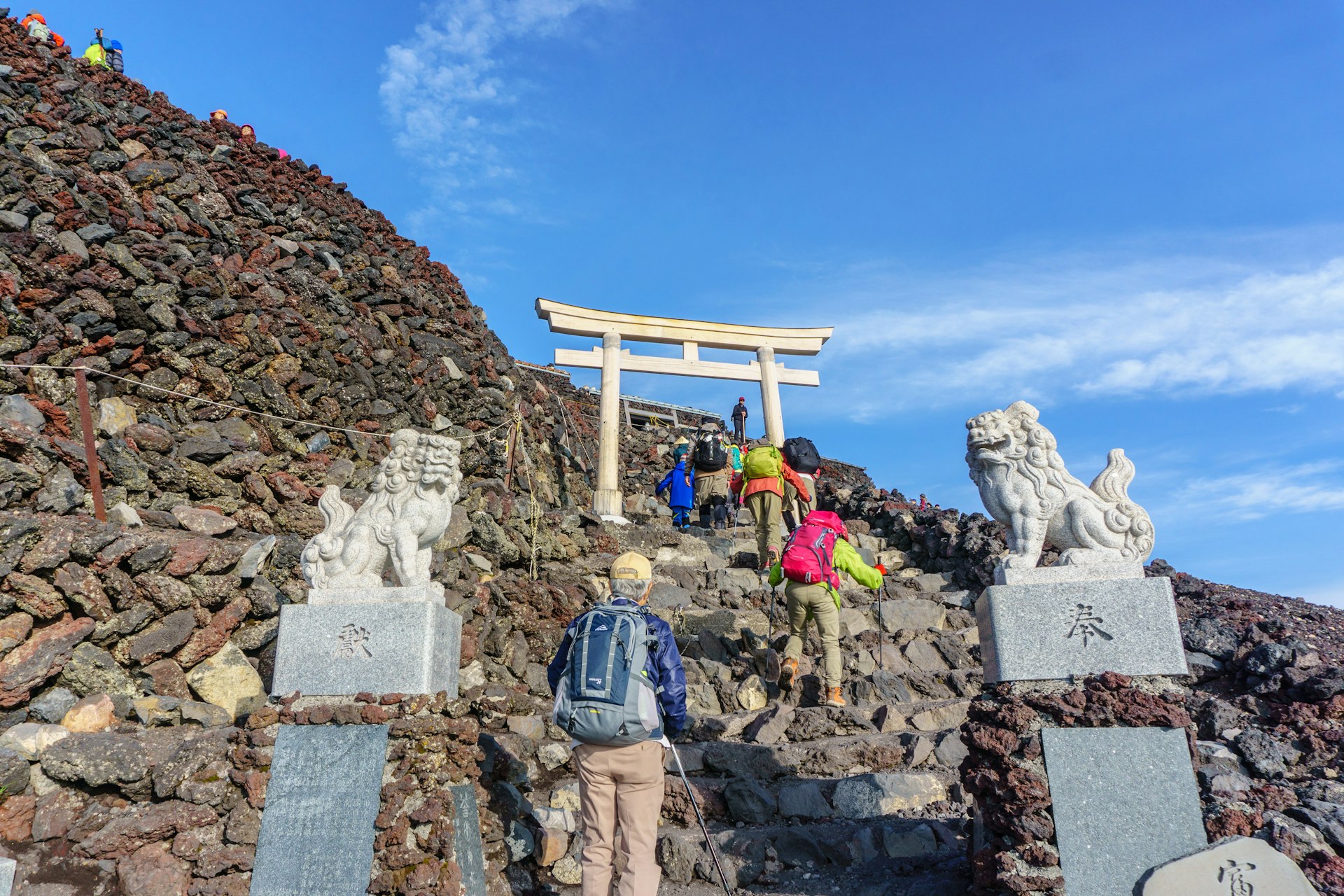
How is Japan likely to manage the problems of overtourism?
It seems unlikely that Japan will curtail its overall number of visitors because of overtourism. More likely, we’ll see more examples of capacity restrictions in specific places, like on Mt Fuji, where a certain number of people per day are allowed in.
This already happens in some cases in Japan: the famous Ghibli Museum in Tokyo and the new Ghibli Park in Nagoya both have a ticket maximum to maintain the quality of experience and to avoid overcrowding — the price for the former is just ¥1000 or about US$6.50, so it really is about capacity.
Some trains — specifically the fastest Nozomi and Mizuho Shinkansen between points west of Tokyo — are not included as part of the Japan Rail Pass , even though the slightly slower trains like the Hikari are. There’s only a few minutes' difference in terms of travel time, but at peak times there can be a half-dozen of the faster trains for every one of the slower ones. This is done for a variety of reasons, including that the clockwork-like efficiency of the shinkansen’s busiest section leaves only the briefest times for passengers to get on and off the train, and confused tourists (often carting large luggage with them) have been known to disrupt operations. Overseas visitors are therefore concentrated into the slightly slower Hikari and much slower Kodama services instead.
A more recent change is the 2020 introduction of the “Baggage 160” system , where travelers must reserve a space for larger pieces of luggage (over 160cm/63in in combined height, width and depth) on more popular bullet train lines or pay a carry-on fee. The change largely stemmed from the complications of visitors bringing large pieces of luggage onto trains that were not designed with large luggage storage. Japanese travelers tend not to bring large suitcases with them on trains, instead shipping them ahead to their destination via the excellent and inexpensive set of luggage delivery services like Yamato Transport , known as kuroneko (black cat) after its ubiquitous logo of a black cat carrying a kitten in its mouth.

How will this impact on group tours?
Keep an eye out for capacity management caps or even outright bans to potentially affect group tours first. These can be very unpopular with local people, and indeed with other visitors.
A tour bus full of visitors descending all at once can change the character of a place instantly, and that’s certainly the case in a lot of the most famous Kyoto temples and shrines like Kinkaju-ji, Ryōan-ji or Kiyomizu-dera . These groups often have a reputation for behaving disrespectfully, like talking loudly in places where quiet is expected, not following rules, and getting in the way of local people and more respectful travelers.
You’re unlikely to be affected as an independent traveler, and a smart tactic is to visit at times when these groups are either still making their way from their hotels, have been packed off for lunch, or are heading back at the end of the day — and to plan to explore the less-traveled corners of this fascinating country.
Explore related stories
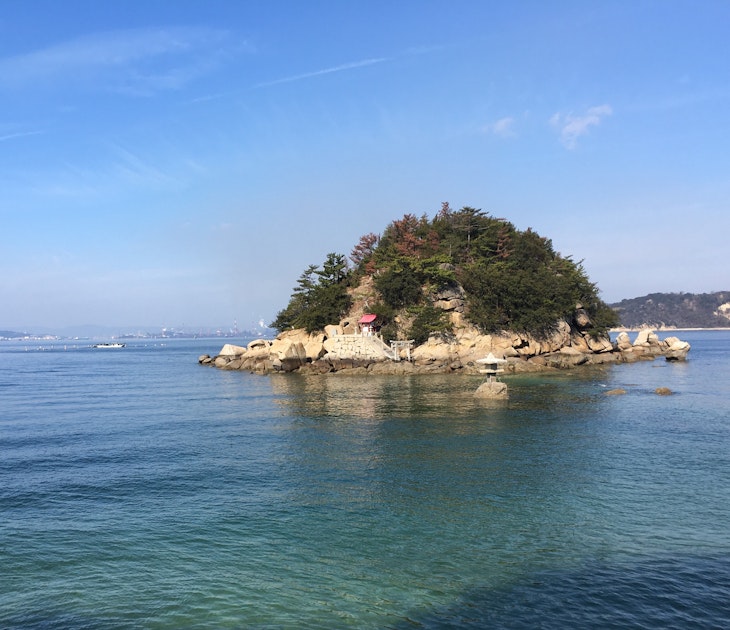
Mar 4, 2020 • 5 min read
Step away from Japan's big cities and sample some slow travel in and around the Seto Inland Sea.

Feb 5, 2020 • 4 min read

Mar 28, 2024 • 7 min read

Mar 21, 2024 • 9 min read

Feb 21, 2024 • 7 min read

Feb 11, 2024 • 11 min read
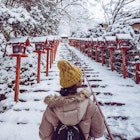
Jan 18, 2024 • 8 min read
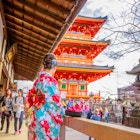
Dec 10, 2023 • 6 min read

Mar 7, 2023 • 7 min read

Mar 27, 2022 • 10 min read

15 Essential Travel Hacks When Visiting Japan
A sk anybody what's on their travel bucket list, and their response is sure to include "Japan." Thanks to a combination of rich heritage, lush landscapes, and labyrinth cities packed with skyscrapers, temples, and tourist traps alike, the country has soared in popularity, with American Express claiming that the number of bookings has increased by 1,300% since 2019 (via Bloomberg ).
Part of what makes Japan so alluring is that its culture and customs are so distinct and unique to those of other countries. That's also what makes it an overwhelming travel destination, especially for first-time visitors. If you start your journey in a major city like Tokyo, Yokohama, or Osaka, you're instantly immersed in a world of neon lights, bustling crowds, loud noises, a million different smells, and sensory overload.
With so much to see, do, and eat, a trip to Japan really isn't the kind of vacation you can make up as you go along. The last thing you need is to run into an easily avoided stumbling block like a lack of internet or 30 minutes spent figuring out the route to your next destination — which is why you'll want to arrive armed with as much knowledge as possible.
Read more: 28 Bucket List Destinations That Everyone Needs To Experience At Least Once
Get Quick Meals At 7-Eleven
It's tough to walk for longer than 20 seconds without stumbling upon a convenience store in Japan. Also known as conbini, these stores are usually open 24 hours a day and are packed full of affordable tasty treats that will keep you going without the time (and money) it takes to eat at an actual restaurant.
For as cheap as 200 yen ($1.34), you can enjoy the likes of onigiri rice balls, chicken karaage, sandos, oden, and bento boxes. We also recommend picking up taiyaki for a quick sugar boost. Shaped like fish and made of pancake or waffle batter, they're usually filled with red bean paste, custard, and chocolate and make for an endlessly addictive snack.
The most common store is 7-Eleven, which has over 20,000 locations throughout Japan and is miles above its U.S. counterpart in the culinary department. There are also over 15,000 FamilyMarts scattered across the country, but they typically don't offer as much variety.
Get Pocket Wi-Fi
Public Wi-Fi is surprisingly scarce in Japan, which can put you in some tough spots if you get lost mid-metro commute. Fortunately, pocket Wi-Fi exists -- and it is a lifesaver. For as cheap as $5 a day, you can rent a portable device that will allow you to access the internet on the go, even on the train. The majority will allow you to connect multiple devices at the same time and come in a variety of different speeds and GB, with some even offering unlimited data throughout your stay.
If you rent in advance through a website like Ninja WiFi or Japan Wireless , you can pick up the device (also known by the much cuter name of a Wi-Fi Egg) at a designated counter once you've got through customs at airports including Haneda and Narita in Tokyo, Chubu Centrair, Kansai International, Fukuoka, and more. Once you're done, you can just pop it into the returns box at the airport on the way back. Easy.
Buy A JR Pass
Sadly, the JR (Japan Rail) Pass isn't as cheap as it once was. It surged in price by 70% in July 2023 as the yen continued to decline in value against other currencies around the world. However, if your itinerary includes extensive train travel, it's still worth the purchase.
The Japan Rail Pass will allow you to ride the rail to your heart's desire -- including the country's infamous, lightning-speed Shinkansen bullet trains (for a supplementary fee) and the Narita Express. It's more expensive to purchase once in Japan, so we recommend buying yours in advance on the JRailPass website where it costs $340.65 for seven days, $544.45 for 14 days, and $680.35 for 21 days.
If your visit is limited to just one or two cities, such as Tokyo and Osaka or Tokyo and Kyoto, then it probably isn't necessary. For example, a trip between Tokyo and Osaka typically costs $120 each way, which is considerably cheaper than forking out a few hundred dollars for a JR Pass.
Download Train Schedules And Maps
Japan has incredible public transportation. It also happens to be extremely overwhelming if it's your first (or second, or third) time in the country. Tokyo's metro can be especially confusing, with nine different train lines and 180 different stations to navigate. Its roads are even more complex with the majority not even having names, baffling even the city's own taxi drivers.
With that in mind, future-proofing for any situation where you may end up lost in an unknown place is always a good idea. Download or screenshot train schedules ahead of time through the JRailPass website, which offers both interactive and PDF versions of Tokyo, Osaka, and Kyoto's transportation systems. You can also download an offline version of the local area on Google Maps. This will also help if you face the aforementioned pesky issue of scarce public Wi-Fi, or if your portable Wi-Fi runs out of juice midday.
Use Citymapper
If you're visiting Tokyo, Citymapper is a must. Just like it does for multiple other cities across the globe, the award-winning app analyzes public transportation, congestion, and distance to figure out all the different ways you can reach your destination, and precisely how many minutes each option will take.
Whether it's walking, cycling, taxis, metro, or a combination of everything, all you need to do is select your chosen route and follow Citymapper's step-by-step instructions. When we say step-by-step, we mean it. The app's so smart that it will even tell you which exits and entrances to use at each station to make your journey as stress-free as possible. If you miss your stop or don't quite make your train, the app will also take that into account to restrategize your trip ASAP. You'll need to be online to request a new route, but if you check your journey ahead of time, you can save it to your homepage for offline use.

Visit Between January And March
There is no one "best" time to visit Japan, but there is a most convenient time. January to March tends to attract less crowds and will also usually bring the cheapest flights of the year. While it'll almost certainly be cold, you'll skip typhoon season and be in with a chance of seeing Japan in the snow.
If you do choose to visit at this time, just be sure to check the dates of the Lunar New Year (AKA Chinese New Year). This tends to be a public holiday across the region and will see cities across Japan packed with tourists. As it's such a popular time to travel, this will also be the exception to the "January to March is cheaper" rule with hotels and airlines driving up their prices over the holiday. The same is true of the end of March, which marks the beginning of cherry blossom season.
Make Advanced Reservations
There's a lot to enjoy in Japan. The problem is that everybody else wants to enjoy these things, too. Tourist attractions often book up months in advance, and a lot of them don't sell tickets at the gate, which doesn't leave much space for spontaneity for the average tourist visiting Japan .
If you plan on visiting the likes of the Warner Bros. Studio Tour Tokyo - The Making of Harry Potter, Tokyo Disney Resort, Ghibli Park, Shibuya Sky observation deck, Teamlab Planets, or the Studio Ghibli Museum, it's best to sort your tickets sooner rather than later. The Ghibli Museum is especially challenging, with tickets for the next month going on sale at 10 a.m. on the 10th of the month prior.
The same is true of the hotels at Tokyo Disney Resort . With one of the most impressive Disney hotel lineups in the world (including the MiraCosta, a hotel that is actually inside Tokyo DisneySea), rooms are in extremely high demand. These go on sale from 11 a.m. four months before the dates you hope to stay and are bookable through the Tokyo Disney Resort Online Reservations & Tickets website.
Download The Japan Connected-Free Wi-Fi App
If you don't want the responsibility of carrying around and charging pocket Wi-Fi, download the Japan Connected -free Wi-Fi app. Whether you need to double-check directions or just have a quick midday TikTok break, this handy tool will search over 170,000 internet hotspots to find the closest location to you. The majority of these will likely be at a 7-Eleven, where you'll almost always be able to go online.
As if that feature isn't useful enough, the app eliminates the need to fill in the registration forms that typically serve as a barrier before you can access public Wi-Fi. Fill out your name and email once and the app will complete each form on your behalf. While you used to need to be online to find the Internet (which kind of defeats the app's entire purpose), you can now download the offline map to ensure you can always find a connection. Just remember to be careful with what data you enter or share while using any public Wi-Fi network .
Japan has been a "cash is king" country for years, meaning paying with notes and coins is the default over ApplePay and credit cards. This attitude has slipped in recent years, but cash still has a strong grip on the country's residents with only 36% of people preferring cashless payments.
While you should be able to use your card in most major outlets and tourist locations -- such as department stores, malls, theme parks, supermarkets, and even taxis -- a lot of restaurants, cafes, and bars still prefer to be paid in cash. This number will be much higher outside of major cities, and many local restaurants, markets, or temples won't have the facilities to accept card payments even if they want to. Exchanging at least a chunk of your spending money into Japanese yen ahead of time will save you in sticky situations (plus it helps you control your spending, which is always a bonus).
Choose Taxis Over Ubers
Although Uber exists in Japan, it's not as widespread or commonplace as in countries like the United States, Canada, or the United Kingdom. Journeys tend to be more expensive than those taken with local cabs, making the latter the service of choice for locals and tourists alike.
The upside to Uber is, of course, the fact that it's so familiar for many tourists. It's easy to order your taxi and pay via card, and the entire process is in English. However, your cheapest option is to hail taxis on the street, as you won't need to pay a base fare for the pick-up service. It'll say on the front of a car in Japanese if it's occupied. It's also color-coded so tourists can understand. Red means it's taken. Green means it's available. If you do want to pre-book, most locals prefer to use the Go app for journeys anywhere within Japan's 47 prefectures. This works similarly to Uber, except it allows you to pay with both cash and card and will give you a flat rate for journeys to and from the airport.
Purchase A Suica Card
The question isn't so much what a Suica card can do ; what can't it do? This prepaid, contactless card can be repeatedly loaded up with more cash to pay for public transport, including the metro, trains, buses, and taxis. Beyond transportation, Suica is also accepted in many shops, restaurants, cafes, and even vending machines. Just look out for the Suica symbol to know if they do -- and if you can't spot it, it's at least worth asking.
You can purchase your card before arriving in Japan and return it at the end of your trip to recover your 500 yen ($12) deposit. Due to a manufacturing shortage, the sale of new Suica cards is temporarily on hold as of June 2023, but if you're on a temporary visa, you can still purchase a Welcome Suica card. This doesn't require a deposit, doesn't need to be returned, and is valid for 28 days. These can only be purchased inside Japan at locations such as Narita and Haneda airports and will come with a reference paper which you'll need to keep on your person at all times.
Utilize Storage Lockers
For security reasons, storage lockers are a rarity at train stations around the world. Japan is an exception. You'd be hard-pressed to find a major station without coin lockers (which, despite the name, can actually be used with a Suica card, too), and in Tokyo, most stations come equipped with storage facilities.
Baggage storage is one of those things you don't realize you'll need until you desperately need it. These lockers are useful if you only have a few hours before heading to your hotel or next destination and want to stow away your belongings so you can freely explore. They also happen to be extremely cheap, typically costing between $1 and $5. There's usually no problem finding a vacant locker, but if you are struggling, you can download the SPACER app , which will allow you to find and reserve a locker at major stations such as Shinjuku, Osaka, and Shibuya in advance. This is currently only available in Japanese, but there are plans for an English version in the near future.
Avoid National Holidays
Lunar New Year isn't the only holiday worth skipping if you want to avoid the crowds. National holidays bring in huge crowds anywhere, but especially Japan, where workers get little annual leave and want to take advantage of the break. If you do decide to brave big attractions like Shibuya Crossing, Senso-ji Temple, or Tokyo Skytree, you'll likely find yourself shoulder-to-shoulder with fellow tourists.
For a quieter vacation, April 29 to May 6 -- or, Golden Week -- is one of Japan's busiest holiday periods. This tends to be the most hectic season for the likes of Tokyo Disney Resort and Universal Studios Japan, where you can expect to wait in long lines for everything, from the park entrance to the restrooms. While Christmas isn't a national holiday in Japan, it is for many other countries, meaning the festive season can also bring an influx of tourists to both of these locations. Late September (Silver Week), New Year, and the Obon Week in August are typically also very busy.
Claim Your Tax Refund
From clothes to gadgets, Japan is one of the most unique places for retail therapy in the world. If you're a tourist, you can also shop with the peace of mind that you'll get at least some of your money back. Any non-resident visiting Japan for less than six months can enjoy tax-free shopping, meaning you can reclaim 10% of the value of your purchase.
There are a few catches. First, you'll need to check that the store is in fact a "tax-free shop" by checking for a logo stating as such at the entrance. They're extremely common and can be found in the likes of Namba City, Echika Ikebukuro, and Seibu Shibuya. You'll also need to have spent more than 5,000 yen ($33) in the same store on the same day. Some stores will let you pay tax-free from the offset if you present your passport, while others will require you to present your receipt at a tax exemption counter on the same day to get your money back.
Download A Good Translation App
If you know Japanese, you're good to go. For those of us who aren't bilingual, Japan can be tough to navigate at times. While most signs in major cities will have translations, less than 30% of people living in Japan speak English, which means it's inevitable you'll hit the language barrier at some point during your stay.
A good translation app is a must, especially one that's able to translate pictures. Google Translate is always a go-to, but one of the best choices is iTranslate Translator . Not only can it tackle text, but you can also use it to scan and translate menus, signs, labels ... you name it. Best of all, it can work offline if you download the Japanese pack ahead of time. It's free to download but will cost you $5.99 a month to unlock its full potential. Considering how useful it is, it's better to spend $5.99 than find yourself stranded in a restaurant blind-ordering a dish because you can't read the menu.
Read the original article on Explore .
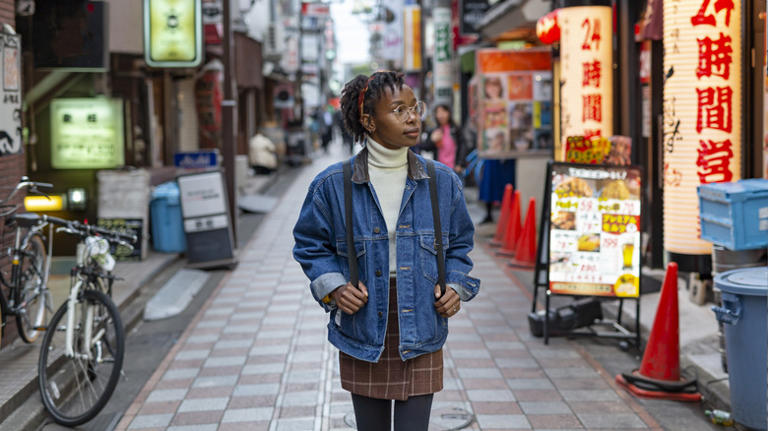
- Things to Do
- Food & Drink
- Shopping & Style
- Coca-Cola Foodmarks
- Restaurants & Cafes
- Music & Nightlife
- Neighborhoods
- Los Angeles

Japan may soon reopen to independent tourists – with one condition
Eager to visit Japan as an independent tourist? You may be able to do so as early as next month

In this (post) pandemic world, Japan is the only G7 nation that has yet to reopen fully for tourism. The country started accepting foreign tourists in June, provided that they enter the country as part of a guided group tour. Unfortunately, this has proven to be unpopular, as NHK reports that less than 8,000 overseas tourists visited Japan in July.
But this is about to change. According to the same NHK report , the government is considering allowing independent tourists from overseas to enter the country for tourism purposes. You don't have sign up for a group tour, but there's still one condition. You have to arrange your visit through a travel agency which will manage your itinerary in Japan. If approved, this new measure could start as early as September.
While this may not be the reopening news most people have hoped for, it’s still an easing of Japan’s strict border restrictions. Earlier today, Japan has confirmed it will no longer require pre-arrival PCR test from travellers who have been fully vaccinated (booster dose included).
This is a developing story and will be updated as more information becomes available.
More from Time Out Tokyo
teamLab Borderless will reopen in central Tokyo in 2023
Yakiniku Like is offering a seven-hour all-you-can-eat barbecue for ¥1,980
33,000 kochia bushes are now growing at Hitachi Seaside Park
Here’s where to download traditional Japanese images and designs for free
Everything we know so far about the world’s first Ghibli Park
Want to be the first to know what’s cool in Tokyo? Sign up to our newsletter for the latest updates from Tokyo and Japan.
- Lim Chee Wah Editor-in-Chief, Time Out Tokyo
Share the story
Discover Time Out original video
- Terms of use
- Work for Time Out
- Time Out Group
- Advertising
- Modern slavery statement
- Manage cookies
Time Out Tokyo
- Magazine subscription
- Digital edition
- Buy the guide to Tokyo
Time Out products
- Time Out Worldwide
[email protected] +44 (0)208 064 2771

SELF-GUIDED TOURS
.jpg)
ESSENTIAL JAPAN
Our Essential Japan Tour is a 13 night 'Golden Itinerary' which takes in the beautiful Japan Alps, the castle town of Matsumoto as well at Mt Fuji (and the nearby resort of Hakone), Kyoto and Tokyo.
13 nights (SELF-GUIDED)
Tokyo, Kyoto, Takayama, Hakone & Matsumoto
From £1,945.00 per person

JAPAN IN LUXURY
Our 'Japan in Luxury' itinerary is a truly special, independent 11 night experience which includes visits to Tokyo, Kanazawa, Kyoto and Hakone.
11 nights (SELF-GUIDED)
Tokyo, Kanazawa, Kyoto & Hakone
From £6,795.00 per person

JAPAN FAMILY HOLIDAY
Our Japan Family Holidays package consists of a superb 12 night itinerary which includes visits to Tokyo, Kyoto, Hiroshima and the nearby lovely Island of Miyajima.
12 nights (SELF-GUIDED)
Tokyo, Kyoto, Miyajima & Hiroshima
From £7,295.00 per family (2 adults & 2 children*)

MY OWN JAPAN
Discover the highlights of Japan with this superb itinerary for single travellers who want to explore the beauty of Japan on their own.
Tokyo, Hiroshima, Miyajima, Osaka, Koya-San, Nara & Kyoto
From £2,395.00 per person

HOKKAIDO'S PERFECT POWDER SNOW
This unique tour has been crafted to cater to adventurous souls, with 12 days around Hokkaido, Japan's snowy north, and a little time in Tokyo for good measure.
12 nights (SEMI-GUIDED)
Tokyo, Sapporo, Furano, Tomamu, Niseko, Otaru
From £6,495.00 per person

CYCLING THE INLAND SEA
The Shimanami Kaido is a 70-kilometre-long road that connects Japan's main island of Honshu to the island of Shikoku passing the beautiful islands of the Seto Inland Sea.
8 nights (SELF-GUIDED)
Osaka, Onomichi, Shimanami Kaido & Takamatsu
From £1,695.00 per person

HIGHLIGHTS OF HOKKAIDO
Once the frontier of Japan, the spirit of pioneering still remains in Hokkaido and its people.
13 nights (SELF-GUIDED)
Tokyo, Hakodate, Lake Toya, Muroran, Sapporo, Otaru, Furano & Biei
From £2,125.00 per person

JAPAN ARTS REVEALED
Designed for lovers of arts and crafts, our Japan Arts Revealed tour is a 10-night self-guided itinerary
10 nights (SELF-GUIDED)
Tokyo, Kyoto, Kurashiki, Naoshima Island, Fukuoka & Arita
From £1,595.00 per person

JAPAN GREEN TOUR
Our Japan Green Tour is a trip that encourages sustainable green tourism.
Osaka, Tokushima, Kamikatsu, Ayabe farm, Ine Fishing Village
From £2,325.00 per person

HIKE THE SACRED TRAIL
Our hiking itinerary allows you to venture off the beaten track and explore the beauty of Japan's flora and fauna
12 nights (SELF-GUIDED)
Kyoto, Kumano Kodo Pilgrimage Trail, Hiroshima, Iwakuni, Okunoshima & Osaka

KYUSHU: ISLANDS & ONSEN
Our 'Islands & Onsen' tour is a 13 night self-guided trip which visits the southern island of Kyushu.
Fukuoka, Nagasaki, Kagoshima, Yakushima, Kumamoto, Kurokawa Onsen & Beppu
From £1,795.00 per person

OKINAWA EXTENSION
Only becoming a part of Japan in the 17th Century, the islands of Okinawa were once a group of fiercely independent kingdoms.
5 nights (SELF-GUIDED)
Naha, Ishigaki Island, Taketomi Island & Iriomote Island
From £695.00 per person

SHIKOKU REVEALED
Experience the rich culture, history and nature on offer in Shikoku with this itinerary, designed for those who want to delve deeper into this fascinating country.
Osaka, Tokushima, Kamikatsu, Iya Valley, Matsuyama, Kotohira, Takamatsu
From £1,625.00 per person

THE BEST OF THE WEST
For our Best of the West Tour you can fly in and out of Kansai International Airport (Osaka) and visit the best that western Honshu has to offer.
Kyoto, Osaka, Hiroshima, Miyajima, Nara, Yonago, Kurashiki & Tsuwano
From £1,345.00 per person

THE GREAT NORTH
The Great North Tour is a self-guided trip through Hokkaido & Tohoku in Northern Japan.
9 nights (SELF-GUIDED)
Tokyo, Matsushima, Nyuto Onsen & Sapporo

THE WAY OF THE SAMURAI
This itinerary is perfect for those with an interest in samurai, ninja and Japanese history.
14 nights (SELF-GUIDED)
Tokyo, Aizu, Nikko, Kamakura, Kyoto & Iga Ninja Village
From £2,595.00 per person

JAPAN EXPRESS
Our Japan Express itinerary is a classic 8 night self-guided itinerary which includes visits to Tokyo, Kyoto, Hiroshima and Miyajima Island.
From £1,599.00 per person
LOOKING FOR SOMETHING ELSE?
Japan Journeys offer various types of trip. Select a different option below.
LUXURY TOURS
Manga / anime/ gaming tours, outdoor tours, special interest/ cultural tours, family tours, regional tours, spring & summer tours, autumn & winter tours.

FIT (Independent Travellers)
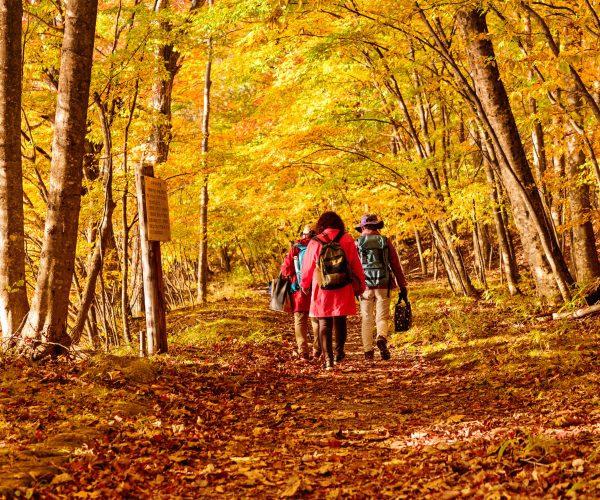
Over the years independent travel has been growing as everyone has different interests and tastes. A large proportion of our business is FIT style travel. This basically is independent travellers – usually couples but also solo travellers. Some often think travelling to Japan independently will be more costly than a group trip but this is not generally the case. Often it is cheaper this way as the ability to tailor make to suit taste, interests, budget, length and so on is much more flexible. Having contracts with properties throughout Japan ranging from economical through to upmarket means we can even tailor make so you experience the best of both worlds. Save money where it makes sense but have the ability to experience a bit of luxury somewhere along the way if you want to treat yourself somewhere. This works well for families too but over the years our clients have ranged from young couples on their honeymoon, bachelor or bachelorette trips or friends or solo travellers deciding to do a graduation trip (school or university) through to couples celebrating a wedding anniversary or retired clients who want to take things at their own pace (fast or slow). The bulk of our business tends to be word of mouth so our aim is that anyone who books with us has a good time so they will hopefully refer us to their family and friends as potential clients in the future. If you are considering a trip to Japan and it is just the two of you or you are a solo traveller and don’t want to join guided group tours or participate in days tours but still want to see Japan and make the most of your time there then you might like to consider having us tailor make a package for you.
Stay up to date with notifications from The Independent
Notifications can be managed in browser preferences.
UK Edition Change
- UK Politics
- News Videos
- Paris 2024 Olympics
- Rugby Union
- Sport Videos
- John Rentoul
- Mary Dejevsky
- Andrew Grice
- Sean O’Grady
- Photography
- Theatre & Dance
- Culture Videos
- Food & Drink
- Health & Families
- Royal Family
- Electric Vehicles
- Lifestyle Videos
- UK Hotel Reviews
- News & Advice
- Simon Calder
- Australia & New Zealand
- South America
- C. America & Caribbean
- Middle East
- Politics Explained
- News Analysis
- Today’s Edition
- Home & Garden
- Fashion & Beauty
- Travel & Outdoors
- Sports & Fitness
- Sustainable Living
- Climate Videos
- Behind The Headlines
- On The Ground
- Decomplicated
- You Ask The Questions
- Binge Watch
- Travel Smart
- Watch on your TV
- Crosswords & Puzzles
- Most Commented
- Newsletters
- Ask Me Anything
- Virtual Events
- Betting Sites
- Online Casinos
- Wine Offers
Thank you for registering
Please refresh the page or navigate to another page on the site to be automatically logged in Please refresh your browser to be logged in
How to avoid post-Brexit passport chaos: Simon Calder answers your questions on new rules for travelling to EU
From why the 10 year rule no longer applies to british holidaymakers travelling to the eu to when you need to renew, the independent’s travel correspondent simon calder answers your top questions, article bookmarked.
Find your bookmarks in your Independent Premium section, under my profile
Long gone are the days when you could travel to the EU at any point before your travel document expired

Sign up to Simon Calder’s free travel email for expert advice and money-saving discounts
Get simon calder’s travel email, thanks for signing up to the simon calder’s travel email.
B ritish visitors to the EU are facing stricter passport validity rules post-Brexit –and it could ruin your holiday if you’re caught out.
Long gone are the days when you could travel to the EU at any point before your travel document expired; the UK is now a “third country”, with rules to match.
EU countries and the wider Schengen Area, which includes Iceland, Norway, and Switzerland, do not accept passports issued more than 10 years ago from such travellers.
Before Brexit, the Passport Office issued British passports valid for up to 10 years and nine months, considering the remaining time from the previous passport. While this wasn’t an issue previously, it’s now affecting some British holidaymakers heading to the EU.
Recent data from the Home Office suggests up to 32 million Brits could be caught out by the rule change.
Many readers are naturally concerned about their travel plans being sullied by an unexpected stop at the check in desk.
To avoid this, you simply need to pass two tests. On the day of entry to the Schengen Area, your passport must have been issued in the past 10 years; and on your proposed day of exit it should have at least three months to run before the expiry date printed in the passport.
During an “ Ask Me Anything ” session for The Independent , I tackled a wide range of questions from readers worried about their holiday plans and how they would be impacted.
Q: My wife’s passport was issued 19 June 2014 and expires 19 January 2025. We are due to travel to France on the 5 April 2024. Now, her passport is within the 10 year rule but will only have two months left on it if the EU considers the expiry date to be 19th June 2024. Does she need to get a new passport urgently or is the three month rule applied to the actual expiry date of Jan 2025?
GibberingOwler
A : Thanks very much for raising a really important point so early. Forgive me while I go on to caps lock. THE EXPIRY DATE OF YOUR PASSPORT IS THE DATE PRINTED BENEATH “DATE OF EXPIRY”. That is the expiry date as recognised by the European Union and everyone else on the planet.
To their enduring shame, HM Government, some airlines, some travel firms and some journalists maintained for many months that this was not the case. But it is and always has been.
So your wife’s passport is valid for travel out to France or anywhere else in the UK until 18 June 2024 for a stay of up to 90 days, ie until 15 September 2024 (subject to previous visits not eating into the post-Brexit allowance). Bon voyage.
Q: My passport was issued in March 2015 and expires September 2025. I am due to travel at the end of April. Can you confirm please that my current passport is ok to use as it will be less than 10 years old when I travel? I just want to check I am understanding the rules correctly.
A : There are just two tests for the European Union:
Is it younger than 10 years? In your case, of course. It’s only nine years old.
Will it have at least three months remaining on the day you plan to return from the EU? Yes. Enjoy the journey.
Q: I am confused because I thought you needed to have a passport to travel to Dublin now as we are out of the EU.
A : The Republic of Ireland is part of the Common Travel Area (CTA) – along with the four nations of the UK, the Channel Islands and the Isle of Man.
There are no routine passport controls in operation for citizens travelling from one part of the CTA area to another. As long as you were born in the UK or Ireland, you are legally able to travel from the UK to Ireland without a passport.
If you plan to travel on Ryanair, the airline insists that you have a valid passport (no restrictions on validity, so long as it has not exceeded its expiry date). On arrival at Dublin airport, you will go through passport control.
But British Airways says: “If you are a citizen of the UK or Republic of Ireland who was born in that country you do not need a passport to travel between the two countries but you do require some form of photographic identification, such as a driving licence.”
Aer Lingus, BA’s sister airline, adds that a bus pass or work ID card with your photo on is quite sufficient. The ferries are similarly relaxed.
Q: My understanding was that you must look at the date of issue of your passport and add 10 years. This date should be treated as your expiry date for the purposes of travel to EU. The ‘issued within 10 years and still have three months left after travel return date would then be applied. Is this correct?
GrannyAnnie
A : Sorry, caps lock again. NO, THE UK GOVERNMENT PRETENDED THAT WAS THE CASE FOR A WHILE until I persuaded them to actually apply the rules that the European Union applies. Your passport expires on the day printed in your passport under “Date of Expiry”.
Q: The BBC has confused me with their article. How can a passport issued up until September 2018 be affected now, or do they mean ‘be aware you will be affected in the future’ i.e. next year for ones issued in 2015?
A : Sorry for any confusion the BBC has caused. The September 2018 date is relevant because that is when the long-established tradition of allowing extra time was abolished overnight. Passports issued since then cannot fall foul of the rule that the UK asked to be applied to itself.
Q: Is the start date issue only valid for the EU? I’m travelling to Asia and my passport will have more than six months left on it when we travel but the passport will be 10 years old on the travel dates.
A : The European Union is the only part of the world that cares tuppence about the issue date of your passport. So no problem for Asia so long as your passport expiry date meets the requirements for the individual countries.
Q: Yet another Brexit bonus, eh? Is this what they meant by ‘taking back control?...
A : I have written as much as I possibly could on the benefits of Brexit for travellers here .
After all, we know: “Brexit has given the UK a world of future opportunities”. It must be true because the government says so.
The main rail unions, which campaigned enthusiastically for Brexit, must also be celebrating.
And then there’s “blue” passports. The government says: “As this document demonstrates – this is a government that possesses the ambition and determination the UK needs to succeed now and for many years to come.”
Hurrah! And please don’t point out that as members of the EU we could have made our passports any colour we like.
Some of the questions and answers have been edited for this article. You can read the full discussion in the comments section of the original article .
If you have more questions you can sign up to my weekly Ask Me Anything email, exclusively for Independent Premium subscribers.
All you need to do to sign up is subscribe to Independent Premium, which you can do here .
When you subscribe you will be asked to select the newsletters you would like to receive - make sure you pick Ask Me Anything to receive my weekly email.
If you’re already subscribed to Independent Premium and want to check out our full offering of Premium and free newsletters click here.
Join our commenting forum
Join thought-provoking conversations, follow other Independent readers and see their replies
Subscribe to Independent Premium to bookmark this article
Want to bookmark your favourite articles and stories to read or reference later? Start your Independent Premium subscription today.
New to The Independent?
Or if you would prefer:
Want an ad-free experience?
Hi {{indy.fullName}}
- My Independent Premium
- Account details
- Help centre

IMAGES
COMMENTS
And it's not that you still need a visa. Traveling to Japan just got a little easier. Starting on Sept. 7, 2022, Japan now allows non-escorted travelers—as long as they book their trip through a travel agency. Japan has seen one of the most cautious reopenings. Borders were only just opened on June 10, 2022 for tourists booked into guided tours.
Is Japan open for travel? Can I travel to Japan right now? As of October 2022, Japan is open for tourism for independent travelers. Visa-free travel for selected countries, including the US, has been resumed. Tourists with U.S. passports can stay in Japan visa-free for up to three months.
Japan will reinstate visa-free travel on October 11 for travelers from more than 68 countries, including the US, Canada, the UK, Ireland, Australia, Mexico, Argentina, Singapore, Thailand and more. If a passport holder a country on the visa-waiver list, you won't need a visa to travel to Japan if you're staying for less than 90 days.
Japan is open! Visa-free, independent travel is now possible for most nationalities. There are NO Covid protocols for Japan. You do NOT need to be vaccinated against Covid to enter Japan. You do NOT need a negative Covid test to enter Japan. You can use the Visit Japan Web app to upload your immigration and customs details in advance.
Japan has been very measured about allowing visitors to enter. It wasn't until June 10 this year that a limited number of travelers (initially a maximum of 20,000 per day, a number that was raised to 50,000 per day this month) from 98 countries —including the United States—were allowed to visit. The news that the country would fully ...
Visitors take selfie photos at Tokyo's Asakusa district. Japan has announced a major policy shift, allowing visa-free, independent tourism and abolishing a daily arrival cap as of Oct. 11. | REUTERS
Prime Minister Fumio Kishida announced that Japan will be open to independent travelers on Oct. 11. ... People visit the Asakusa area, a popular tourist location, in Tokyo on September 13, 2022. ...
Independent tourists can visit Japan from September 7, as long as they book their hotel and flights via a travel agency ... According to the report, independent tourists will now be able to travel ...
Japan to relax Covid travel restrictions and grant entry to independent tourists. Beginning Oct. 11, Japan will drop visa requirements and the cap on the number of tourists granted entry . People ...
Sep 12, 2022. The government is planning to allow independent tourists to come to Japan and exempt them from visas if they have been vaccinated three times or submit a pre-arrival test result ...
Starting Tuesday October 11, Japan will drop its 50,000 entry cap and will allow independent tourists to visit Japan visa-free. Currently, citizens of 68 countries and regions will be allowed to ...
Traveling in Japan can get expensive, but its currently weak yen can work in travelers' favor. Where can I find help once I'm in Japan? The Japan National Tourism Organization offers a 24-hotline ...
Japan is finally open to independent travellers - and has now lifted even more border restrictions. Written by. James Manning. Wednesday 12 October 2022. For two-and-a-half years, travel to ...
Kyoto, Japan. (Getty Images/iStockphoto) Japan, one of the last major nations to retain strict Covid controls on visitors, will finally open to independent travellers on 11 October. The country ...
Two times of year I would avoid for a vacation to Japan are: Golden Week in early May - In 2024, Golden Week is from 27 April - 6 May. This is a series of national holidays so many Japanese travel domestically, trains and hotels book up, and popular spots will be extra crowded. New Year - Late December to early January.
Unless you're sticking to Tokyo, buy a Japan Rail Pass (japanrailpass.net), which allows unlimited travel on most major lines throughout the country. A seven-day pass costs about £186 and must ...
Some trains — specifically the fastest Nozomi and Mizuho Shinkansen between points west of Tokyo — are not included as part of the Japan Rail Pass, even though the slightly slower trains like the Hikari are.There's only a few minutes' difference in terms of travel time, but at peak times there can be a half-dozen of the faster trains for every one of the slower ones.
An important consideration for visiting Japan without a tour guide in 2023 is that Japan has only just opened its borders to independent travel since the 2020 pandemic. Tour guide requirements Japan. This is important because there are still COVID-19 restrictions in place that could lead to the restriction of fully independent, visa-free travel ...
No more PCR tests and travellers will be allowed to visit Japan without a visa AND tour groups from October 11th - good news for everyone! 1¥ = SGD .0100/RM 0.032 . Halal Food. Japan; Hong Kong ... On 22nd September (Thursday), the Japanese government will allow visa-free, independent tourism and abolish a daily arrival cap as of Oct. 11. If ...
For as cheap as 200 yen ($1.34), you can enjoy the likes of onigiri rice balls, chicken karaage, sandos, oden, and bento boxes. We also recommend picking up taiyaki for a quick sugar boost.
Lim Chee Wah. Wednesday 24 August 2022. In this (post) pandemic world, Japan is the only G7 nation that has yet to reopen fully for tourism. The country started accepting foreign tourists in June ...
For example, a seven-day JR pass starts at £173 - just £13 more than the £180 starting rate for a return from Tokyo to Osaka, one of Japan's most popular railway routes. If you're not ...
Self Guided/Independent Tours | Japan Journeys
A large proportion of our business is FIT style travel. This basically is independent travellers - usually couples but also solo travellers. Some often think travelling to Japan independently will be more costly than a group trip but this is not generally the case. Often it is cheaper this way as the ability to tailor make to suit taste ...
Expert travel guides and holiday advice. Japan takes the top spot on numerous travellers' wish lists - and for very good reason. This island nation in the northwest Pacific is an endlessly ...
Many countries across the world require you to have a few months left on your passport at the time of travel - here are the main holiday destinations to watch out for Travel Desk Friday 29 March ...
From why the 10 year rule no longer applies to British holidaymakers travelling to the EU to when you need to renew, The Independent's travel correspondent Simon Calder answers your top questions